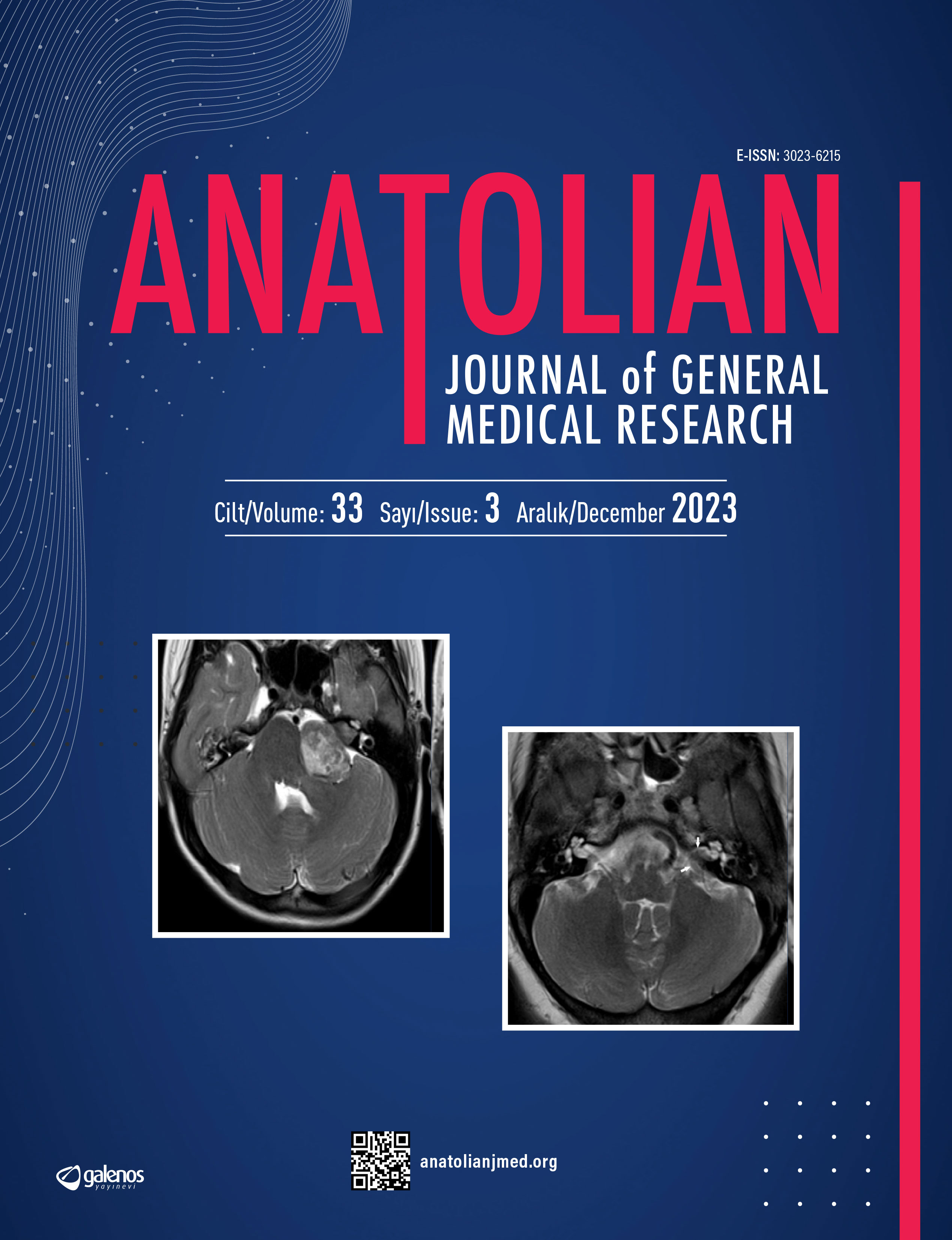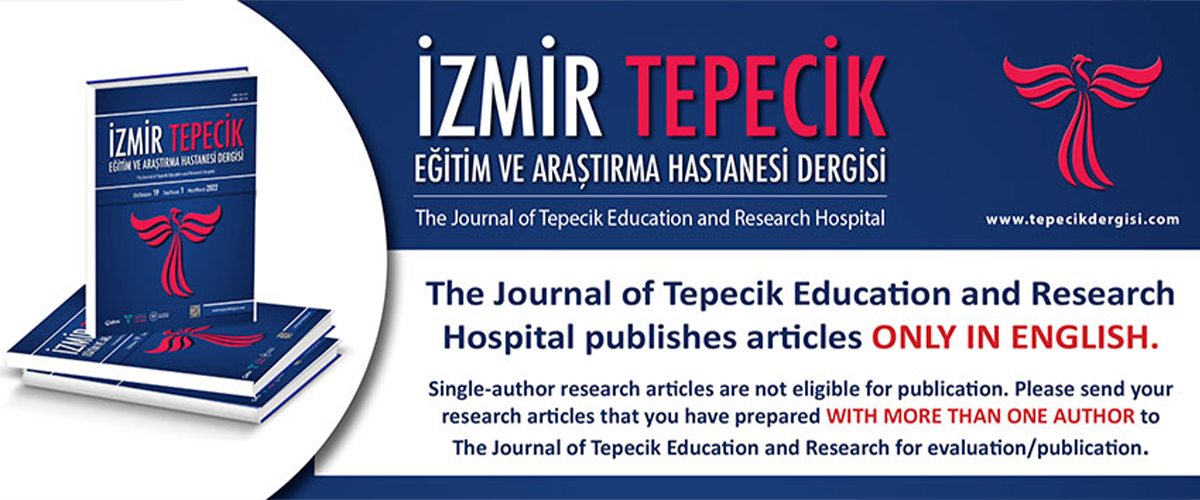








Maternal and Neonatal Outcomes of Patients who Delivered with Kiwi Omnicup Vacuum System: Experience of A Tertiary Care Hospital
İsmail Alay, Şükrü YıldızUniversity of Health Sciences Turkey, Bakırköy Dr. Sadi Konuk Training and Research Hospital, Clinic of Gynecology and Obstetrics, İstanbul, TurkeyObjective: Vacuum-assisted delivery is the most preferred operative vaginal delivery method and Kiwi Omnicup is a recently designed system for vacuum-assisted delivery with has a plastic cup, flexible traction wire, and a handheld vacuum pump. The aim of this study was to assess the Kiwi Omnicup application rates in a tertiary care hospital and evaluate the early neonatal and maternal outcomes of Kiwi-assisted deliveries.
Methods: The Kiwi Omnicup Vacuum-assisted deliveries after 37 weeks of gestation between January 2016 and December 2019 at a tertiary care hospital were reviewed in this study. The sociodemographic characteristics of the patients, obstetric data, early postpartum neonatal, and maternal outcomes of the patients were obtained. The vacuum-assisted delivery indications, including the prolonged second stage of labor, maternal exhaustion, and fetal compromise were recorded. Maternal and neonatal complications including, third or fourth-degree perineal lacerations, early postpartum hemorrhagic, shoulder dystocia, fetal death, fetal scalp laceration, and neonatal intensive care unit necessity of newborns were recorded.
Results: During the study period, 58 (1.28%) of the 4525 vaginal deliveries were performed with the Kiwi Omnicup system. The mean age of the patients was 25.3±5.3 years. The mean body mass index of the patients was 28.4±3.2 kg/m2 and 86.2% of the patients were overweight and obese. The prolonged second stage of labor was the most recorded (48.3%) indication for Kiwi-assisted delivery. Caput succedaneum occurred in 5 neonates (8.6%). Eight newborn babies were observed closely in the Pediatric department. Two newborns were transferred to the intensive care unit. Any other maternal and neonatal complications were observed.
Conclusion: The Kiwi Omnicup Vacuum system is easy to use and has low maternal and neonatal adverse outcomes. Although the feasibility of this system was confirmed by several studies, it has low usage rates. The reasons for avoidance from Kiwi omnicup vacuum usage at delivery should be evaluated.
Kiwi Omnicup Vakum Sistemi ile Doğum Yapan Hastaların Maternal ve Neonatal Sonuçları: Üçüncü Basamak Bir Sağlık Merkezinin Deneyimi
İsmail Alay, Şükrü YıldızUniversity of Health Sciences Turkey, Bakırköy Dr. Sadi Konuk Training and Research Hospital, Clinic of Gynecology and Obstetrics, İstanbul, TurkeyAmaç: Vakum yardımıyla doğum en çok tercih edilen müdahaleli vajinal doğum yöntemidir ve Kiwi Omnicup, plastik kap, esnek çekiş kablosu ve el tipi vakum pompasına sahip vakum destekli doğum için yakın zamanda tasarlanmış bir sistemdir. Bu çalışmanın amacı, üçüncü basamak bir hastanede Kiwi Omnicup sisteminin uygulanma oranlarını değerlendirmek ve Kiwi Omnicup yardımıyla yapılan doğumların erken neonatal ve maternal sonuçlarını değerlendirmektir.
Yöntem: Bu çalışmada, Ocak 2016 ile Aralık 2019 tarihleri arasında üçüncü basamak bir hastanede 37 haftalık gebelik haftasından sonra Kiwi Omnicup Vakum sistemi ile olan doğumlar incelendi. Hastaların sosyo-demografik özellikleri, obstetrik verileri, doğum sonrası erken neonatal ve maternal sonuçları kaydedildi. Uzamış doğumun ikinci evresi, anne yorgunluğu veya tükenmişliği, ve fetal kötülük hali gibi vakum yardımlı doğum endikasyonları kaydedildi. Üçüncü veya dördüncü derece perine yaralanmaları, erken postpartum kanama, omuz distosisi, fetal ölüm, fetal skalp yaralanması, ve yenidoğan yoğun bakım ünitesi ihtiyacını içeren maternal ve neonatal komplikasyonlar kaydedildi.
Bulgular: Çalışma süresi boyunca 4525 vajinal doğumun 58’i (%1,28) Kiwi Omnicup sistemi yardımıyla olmuştur. Hastaların yaş ortalaması 25,3±5,3 idi. Hastaların ortalama vücut kitle indeksi 28,4±3,2 kg/m2 idi ve hastaların %86,2 si aşırı kilolu ve obez idi. Uzun süren doğum eylemi (%48,3), Kiwi yardımıyla doğum için en fazla kaydedilen endikasyondu. Beş yenidoğanda (%8,6) kaput succedaneum görülmüştür. Sekiz yenidoğan pediatri bölümünde yakın gözlemde kalmıştır. İki bebek yenidoğan yoğun bakım ünitesine transfer edildi. Başka herhangi bir maternal ve neonatal komplikasyon gözlenmemiştir.
Sonuç: Kivi Omnicup Vakum sistemi müdahaleli doğum için kullanımı kolay ve düşük maternal ve neonatal kötü sonuç oranlarına sahiptir. Bu sistemin uygulanabilirliği çeşitli çalışmalarla doğrulanmış olmasına rağmen, klinisyenler tarafından kullanım oranları düşüktür. Doğumda klinisyenlerin Kiwi Omnicup Vakum sistemini kullanmaktan kaçınma nedenleri değerlendirilmelidir.
Corresponding Author: İsmail Alay, Türkiye
Manuscript Language: English
(450 downloaded)




